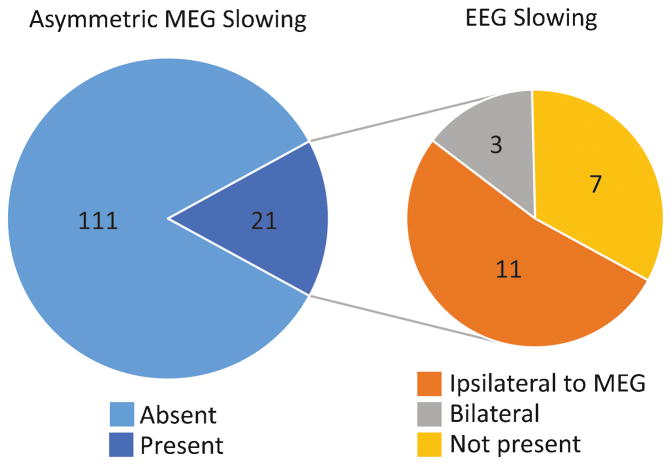Figure 2.
Increased sensitivity of MEG for asymmetric slowing compared to EEG. Among 132 patients, asymmetric slowing was identified on MEG recordings in 21 (15.9%) individuals. Among these 21 patients with MEG slowing, asymmetric EEG slowing was observed in 11 (52.3%) individuals, while 10 (47.7%) patients had either no EEG slowing or bilateral EEG slowing. Zero (0%) of the 111 patients without MEG slowing showed asymmetric slowing on EEG. This results in a significantly higher sensitivity of MEG than EEG for asymmetric slowing (χ2 = 63.4, p < 0.001).

